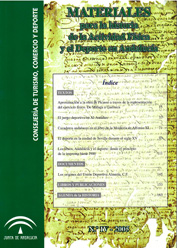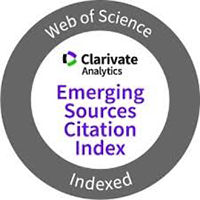Sport game in al-Andalus
Keywords:
Al-Andalus, games, sport, sport anthropology.Abstract
The Omeya’s dynasty settled down in Spain, heiress of a millenarian culture with origin in one side by Greco-Roman and another onte through Syria and Egypt, impregnated of the sasánida culture of Persia and Mesopotamia, practiced popular sports in those countries and they introduced them in al-Andalus. Thus we can mention montería, falconry, horse races, pole, baths public, cañas game and the chess. We verified as during the permanence of the Muslims in Spain there were a constant influence of all type, among them and the Cristian kingdoms, being made notice in customs like the game. In addition, it is necessary to review that the moriscas populations based in the geographic spaces conquered by the Christian kingdoms, during long time, maintained their customs, diversions and games, reason why the study of the sport game in Muslim Spain cannot be fitted exclusively only to the time of Muslim dominion, but that it has to include the different historical times, where the hispanomusulmana population maintained its culturalo characteristics and therefore its influence in diverse aspects of the culture and the daily life. That includes a long periodo f time that goes at least, from century VIII to XVII (1609, date of the expulsión of the moriscos).
Downloads
Downloads
Issue
Section
License
Authors who submit to this journal agree to the following terms:
- Author(s) keep copyright and guarantee to the journal the right to be the first publication of the work as licensed under Creative Commons Attribution-Noncommercial-ShareAlike 4.0 International as initial publication in this journal.
- Author(s) can establish additional agreements for non-exclusive distribution of the version of the work published in the journal (for example, to an institutional archives or to publish it in a book), with an acknowledgment of its initial publication in this journal.
- It is allowed and authors are encouraged to disseminate their work electronically (e.g, in institutional open archives or on their own website) before and during the submission process, as it can lead to productive exchanges, as well as a citation earlier and more of published work (See the Effect of Open Access).










